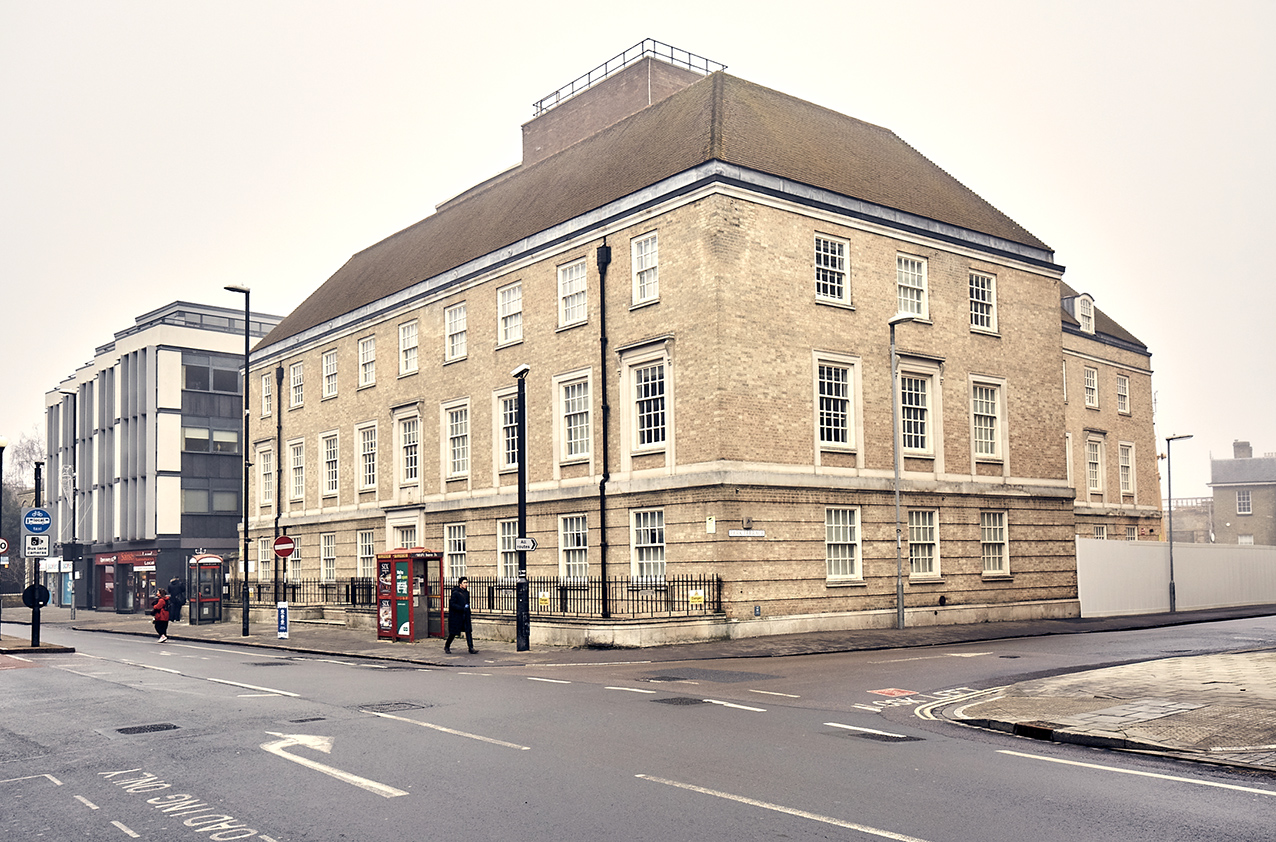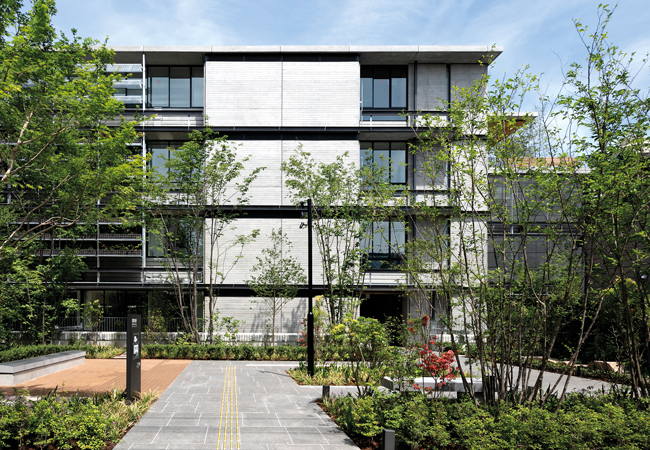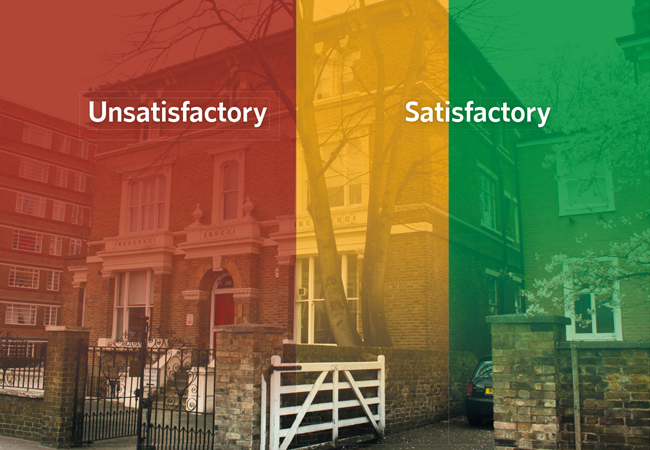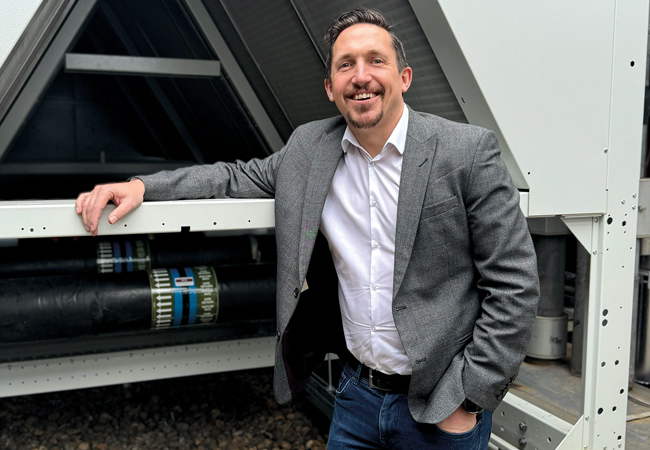
The clock is now ticking and the targets are in place,’ declares CIBSE technical director Hywel Davies. ‘We have to design net zero buildings now.’
Creating net zero carbon buildings will be at the forefront of building engineers’ minds in 2022. The stark evidence of climate change means there is no time to lose, and the construction industry has the will and the ingenuity to deliver buildings that leave no carbon trace. In the UK, the threat of climate change has coalesced once-disparate views, and now the only question is how quickly we accelerate towards the Future Homes and Buildings Standard1, which aims to make all buildings ‘net zero ready’ from 2025.
Energy reduction should not be the only priority over the next 12 months, however. Attention should also be paid to health, safety and wellbeing, not only in the way we keep occupants safe from the virus, but also in how we ensure buildings that put lives at risk are never designed. The next year will be an opportunity for engineers to ensure their competencies are in line with what will be required under the Building Safety Bill2 – these competencies will be required for all buildings.
The ultra-contagious Omicron variant of Covid-19 has been a jolt for those who thought the virus had been neutralised by vaccination and increased immunity. There will be no room for complacency in 2022, and attention will turn to difficult-to-ventilate buildings.
Net zero carbon and health, wellbeing and safety are two of CIBSE’s Knowledge and Research Priorities3, with the others being: circular economy; climate adaptation; digital engineering; retrofit and refurbishment; and
smart buildings.
Simon Wyatt, a partner at Cundall and chair of the CIBSE Knowledge Generation Panel, says CIBSE’s five Covid-19 guidance documents were downloaded almost 40,000 times in 2021. These didn’t just focus on ventilation, but also on lifts and escalators, and public health engineering issues. ‘The rate of publication has been remarkable,’ he says.
CIBSE’s publication diary for 2022 shows a plethora of relevant guides around the net zero revolution. AM17 Heat pumps for non-domestic buildings follows hot on the heels of the housing equivalent, AM16, while TM65.1 and TM65.2 add much-needed embodied energy data on building services systems.
Wyatt believes there will be an increase in clients’ interest in the operational energy use of their buildings in 2022. CIBSE’s TM54 Operational energy performance guidance enables designers to calculate predicted in-operation energy use and compare it against buildings’ actual energy use, allowing building managers to identify performance gaps. A revised TM54 will be published in 2022.
The lack of mandatory operational assessments in Conservation of fuel and power: Approved Document L4, published last month, was lamented by Wyatt. In the draft document, it was mooted that large buildings would be required to assess operational energy by using TM54 or other modelling methodologies, such as the Passivhaus Planning Package. ‘The big missed opportunity is that a significant proportion of the market will develop buildings without any clue of the operational energy use,’ says Wyatt, who adds that the success of the Nabers energy rating system in Australia, where energy use in buildings has been reduced by 70%, shows what can be achieved by predicting energy use.
Ed Wealend, head of research and innovation at Cundall, says a new generation of developers in the UK is using the Design for Performance (DfP)5 initiative, which is based on Nabers, and that London property firms are keen to get the first DfP-rated building. ‘A bit of healthy competition is good way to drive the market,’ he adds.

A visual of the retrofitted HQ of the Cambridge Institue for Sustainability Leadership
Nathan Millar, sustainability principal at Elementa Consulting, has also seen an acceleration in interest in zero carbon and decarbonisation, and expects it to start becoming the norm in 2022. ‘We’re seeing clients of all sizes, from the public and private sectors, trying to find the best route to net zero,’ says Millar, who believes one of the big drivers is access to green funding. ‘Developers need to clearly articulate the energy use of their buildings to investors,’ he adds.
Time to define
How net zero is defined should become clearer in 2022. Last year, LETI supported by CIBSE, RIBA and the Whole Life Carbon Network produced a set of definitions that included operational and whole-life carbon6. Last month, CIBSE and LETI carried out an industry survey, What does zero carbon mean?, and will be publishing FAQs on a net zero definition in early 2022, which CIBSE, potentially, will adopt.
‘It’s about getting clarity on the details of terminology so there is no greenwashing,’ says Clara Bagenal George MCIBSE, associate at Elementa Consulting and co-founder of LETI.
With its inclusion in net carbon definitions, interest in embodied energy will continue to grow this year. In 2020, CIBSE published TM65 Embodied carbon in building services, which provided a methodology for calculating embodied carbon for building services products. Manufacturers were also encouraged to share data on the embodied energy in their products and, as a result, CIBSE produced TM65.1 Embodied carbon of residential heating. TM65.2 will be the equivalent for offices and will be published early in 2022.
‘TM65 was important and we’ve seen that being rolled out globally,’ says Millar. ‘TM65.2 is the next piece of the jigsaw. Suppliers will follow a similar methodology and approach to calculating embodied carbon, so we can have confidence about their equipment and material.’
Cundall’s Wyatt believes more local authorities will follow the lead in the London Plan, which requires developers to calculate and reduce whole life-cycle emissions for planning permissions referred to the Mayor (and encourages it on all major developments). ‘TM65 has been a gamechanger,’ he adds. ‘There’s now no excuse for us to not ask for EPDs [environmental product declarations] from manufacturers.’

AC units could be reused or repurposed in a circular economy
Wyatt and Millar both predict that the circular economy will gain traction in 2022, with audits determining what can be reused or repurposed in existing buildings.
The publication of TM66 – Creating a circular economy in the lighting industry in November is an invaluable addition to the body of guidance in this area.
The inclusion of embodied energy in whole-life carbon assessments will drive the retrofit of more buildings, such as the Cambridge Institute for Sustainability Leadership’s Entopia Building (left), which was previously a telephone exchange. LETI published the Climate Emergency Retrofit Guide7 and, in 2022, will be working with CIBSE on a version for non-domestic buildings.
Staying Covid-secure
Covid will still loom large in 2022. ‘There has been a bit of complacency over the past six months because the vaccine was seen to be controlling Covid,’ says Wealend, who is chair of the CIBSE clean air working group and co-author of Covid-19: Air cleaning technologies.
He says the focus is now on schools, which have been a larger driver of community transmission. A study by Leeds University on the effectiveness of standalone Hepa filters and ultraviolet (UV) air cleaning units in 30 schools will be published in the spring, which will help the Department for Education determine whether schools need a strategy beyond opening windows to flush out any virus.
Covid has led to an ‘uptick’ in people wanting to monitor indoor air quality, adds Wealend, who is an Approved Person for Reset, a Chinese certification body for indoor air quality. AirRated is the UK equivalent. ‘We had no interest in Reset until Covid came along,’ he says. ‘My initial impression was that it wasn’t necessary in the UK, but having reviewed the data of five to six buildings, I have changed my mind.’
A safe new year
In her Independent review of Building Regulations and fire safety, Dame Judith Hackitt identified four major areas that she believes contributed to the Grenfell Tower disaster: ignorance, indifference, lack of clarity on roles and responsibilities, and inadequate regulatory oversight and enforcement.
In response to the report, the government introduced the Fire Safety Act in April 2021 and the Building Safety Bill, which is expected to receive Royal Assent in mid-2022. Among the requirements of the Fire Safety Act, owners and managers of multi-occupied residential buildings have to examine external walls and doors as part of a fire risk assessment.
The Building Safety Bill is more relevant for engineers. It requires owners of high-rise residential buildings to manage the safety risk and ensure that those planning, designing, constructing and maintaining a building take responsibility for fire safety.
The bill also establishes the role of building safety regulator (BSR), which will operate within the Health and Safety Executive and oversee design, and construction of all buildings, and also occupation of high-risk buildings. Importantly for engineering professionals, the BSR will set new competence requirements for work on all buildings, which engineers will have to be aware of in 2022.
New competence regulations
The Draft Building (Appointment of Persons, Industry Competence and Dutyholders) Regulations, contained in the bill, require everyone working on buildings, and employers, to assess competence and demonstrate it to clients and regulators. There are three dutyholder roles – principal designer, principal contractor, and building safety manager. Clients have statutory responsibilities under the dutyholder regs for the appointment of all the designers, contractors including the principals.
The dutyholders will need to work together to plan, manage and monitor the design and building work, and have systems in place to ensure they comply with relevant building regulations. These new roles mean responsibility is being placed on clients and designers and contractors, said Hywel Davies at CIBSE’s online Build2Perform conference. ‘It’s for clients to take all reasonable steps to satisfy themselves about the competence of those they propose to appoint,’ he added.
There will also be a duty on designers and contractors to be satisfied they are accepting an appointment that they are competent to undertake, with penalties for those who take on work they are not competent to do. ‘This is a significant shift of responsibility, and it’s very much falling to industry and clients,’ said Davies.
The bill also states that occupied higher-risk buildings must have at least one clearly identifiable accountable person, known as the principal accountable person. They will be responsible for appointing a building safety manager, who will coordinate the management and oversight of building safety risks.
To support the bill, the Competency Steering Group (CSG) was formed to work with the what is now the Department for Levelling Up, Housing and Communities and industry to define competency standards. The government is working with the CSG to develop a competency framework and specification for building safety managers, which it plans to publish in 2022 as part of a suite of competency standards. ‘Dame Judith made it clear that the industry needed to change, and that our standards of compliance had fallen and we needed to address those,’ said George Adams, chair of Working Group 1 – Engineers (one of 12 sections of the CSG).
The group’s core activity was to examine competency in the industry and how it could be improved. As part of this, it looked at Annex 1G – UK-SPEC, which focuses on how competency is measured for professional engineers working on any building.
In its report, the group proposed the need for a ‘lead engineer’, who would support the principal designer, principal contractor and building safety manager. A dutyholder can also be a lead engineer. An additional compliance requirement will be necessary for professional engineers who want to practise in the area of higher-risk buildings.
CIBSE is working with the Engineering Council to enhance the current UK-SPEC for contextualised registration, says Vince Arnold, CIBSE board member and trustee: ‘CIBSE members are involved in writing the enhanced competence requirements for building services, fire and structural [including façade] within working groups. If you become a contextualised registered engineer, you will face revalidation, expected to be every five years, by interview or submission of portfolio that gives evidence of your skills, knowledge, behaviours and experience in the field of higher-risk buildings.’
Working Group 1 will now develop an initial training workshop for end users on how they can roll out their own methodology of safety case process and report, says Adams, who adds that it is important for members to plan their CPD for 2022. ‘If you want to practice within the world of higher-risk buildings, your CPD will have to change to support the requirements, to show you are up to speed with safety in that area of our industry.’
References:
CIBSE guides are at www.cibse.org/Knowledge/Guides. Covid-19 guidance is free to non-Members
- The Future Buildings Standard, accessed Dec 21
- Building Safety Bill, accessed Dec 21,
- CIBSE Knowledge and Research Priorities
- Conservation of fuel and power: Approved Document, Dec 21 L bit.ly/CJJan22Pre4
- Design for Performance initiative, Better Building Partnership.
- LETI net zero carbon definitions,
- Climate Emergency Retrofit Guide, LETI






